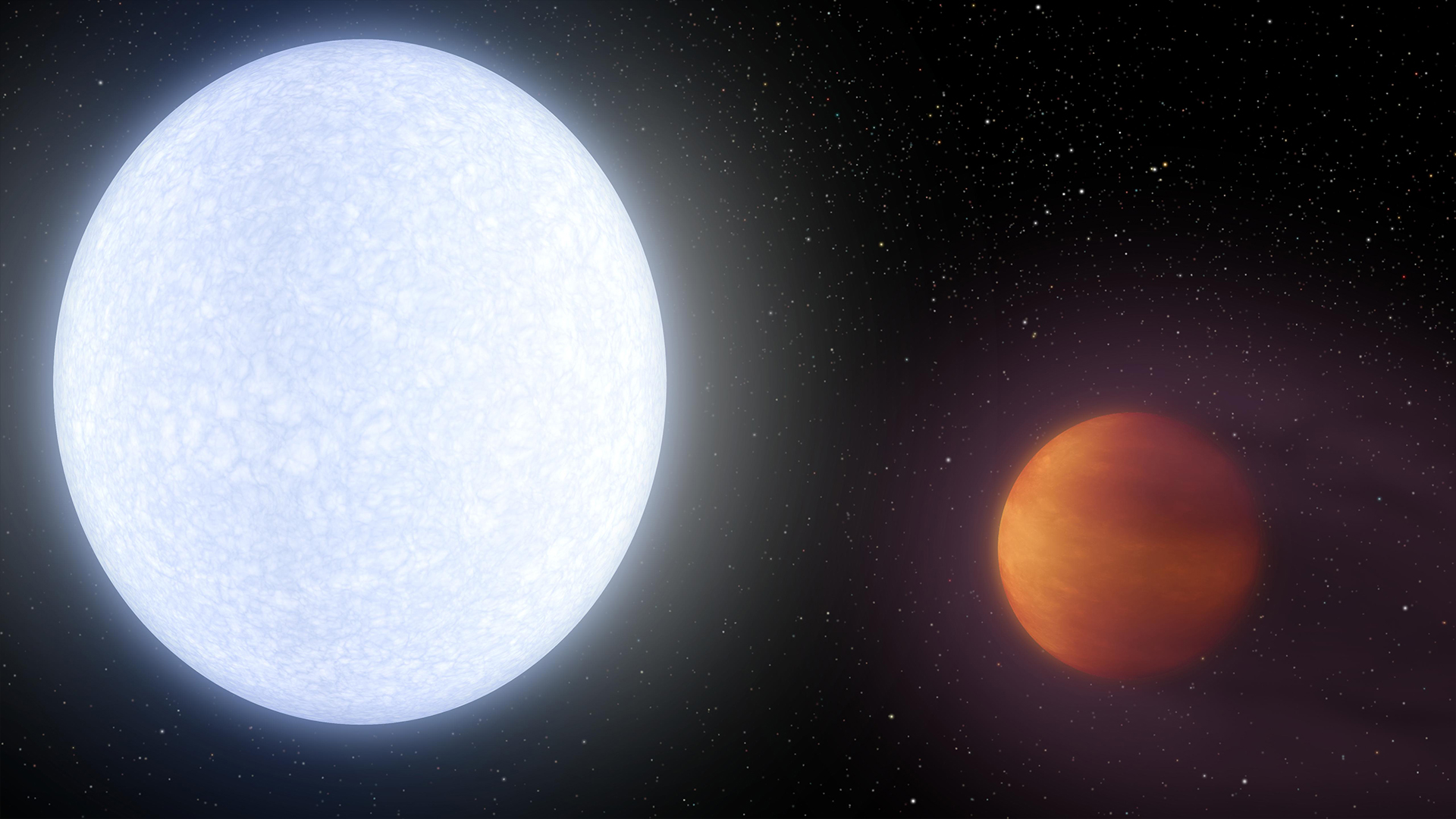Bizarre 'failed star' the size of Jupiter is 2,000 degrees hotter than the sun
This Jupiter-size object is 80 times denser than a planet and hotter than the sun.

A newly discovered star system is breaking records — and helping scientists unravel the mysteries of an extreme type of planet known as hot Jupiters. In a paper published Aug. 14 in the journal Nature Astronomy, researchers describe how the system could help further our understanding of worlds beyond our solar system.
The binary system, located 1,400 light-years away, consists of a "white dwarf" and a "brown dwarf." White dwarfs are the crystalline cores of large stars that ran out of fuel and collapsed under their own gravity. Brown dwarfs, meanwhile, blur the line between planets and stars. They are more massive than gas giant planets but don't have quite enough fuel to ignite a stellar fusion reaction in their cores — which is why they're often referred to as "failed stars."
Related: What's the largest planet in the universe?
This particular brown dwarf is unusual in that it is about the same size as Jupiter but has about 80 times Jupiter's mass. In other words, it's incredibly dense — and incredibly hot. The object is tidally locked, with one side permanently facing its companion star while the other side faces away. On the "day side," temperatures soar to more than 17,000 degrees Fahrenheit (9,500 degrees Celsius) — about 7,000 F (3,900 C) hotter than the surface of the sun. Its "night side" is cooler — about 4,900 F (2,700 C).
The new brown dwarf is hotter, on average, than any exoplanet discovered to date. However, its size and brightness (especially compared with its dim companion star) make it a good approximation of a common type of exoplanet called a hot Jupiter.
The term "hot Jupiter" might conjure images of a buff Roman god enjoying a summer on the beach. But in this case, it refers to a gaseous, Jupiter-like exoplanet orbiting close to its host star. Astronomers have discovered more than 500 hot Jupiters to date. They range in size from about one-third to more than 10 times Jupiter's mass and, as the name suggests, tend to be quite warm. Most hot Jupiters fall between 1,300 and 3,100 F (700 to 1,700 C); that toasty temperature is possible because their tight orbits all but hug their host stars.
Unfortunately, because hot Jupiters orbit so closely to their stars, they tend to get swallowed up in the glare, making them hard to see. But the newly discovered brown dwarf is orbiting a very faint companion star, making the brown dwarf easy to spot. Studying the smoldering world in further detail could reveal new insight into how binary systems form and how hot Jupiters evolve over time.
Sign up for the Live Science daily newsletter now
Get the world’s most fascinating discoveries delivered straight to your inbox.
"Hot Jupiters are the antithesis of habitable planets — they are dramatically inhospitable places for life," Na'ama Hallakoun, an astrophysicist at the Weizmann Institute of Science in Israel and lead author of the study, said in a statement. "Future high-resolution spectroscopic observations of this hot Jupiter-like system — ideally made with NASA's new James Webb Space Telescope — may reveal how hot, highly irradiated conditions impact atmospheric structure, something that could help us understand exoplanets elsewhere in the universe."

Joanna Thompson is a science journalist and runner based in New York. She holds a B.S. in Zoology and a B.A. in Creative Writing from North Carolina State University, as well as a Master's in Science Journalism from NYU's Science, Health and Environmental Reporting Program. Find more of her work in Scientific American, The Daily Beast, Atlas Obscura or Audubon Magazine.










